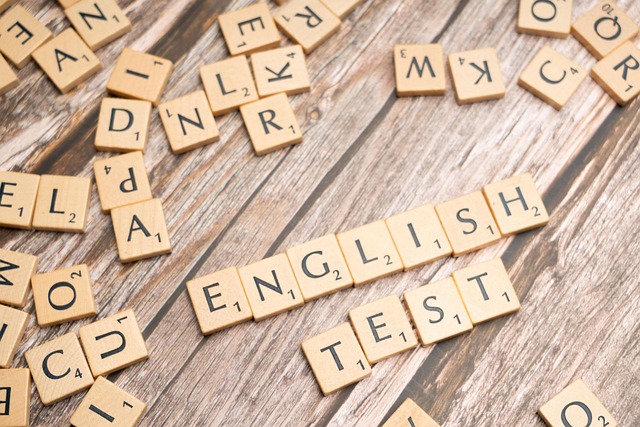¿Cómo prepararse para la sección de reading del TOEFL?

April 19th
Inglés avanzado
How's it going, dude?
Soy Albert Didier, y el día de hoy quiero mostrarles cómo sacar un puntaje muy alto en la sección readin examen TOEFL
Antes de esto, quiero invitarte a suscribirte al curso gratuito de Speak 5 dando clic aquí.
Y ahora, sigamos adelante:
Tabla de contenidos:
2. Cómo prepararse para la sección de reading del TOEFL
3. Ejercicio de práctica de lectura TOEFL real
4. Preguntas reales de la sección de lectura TOEFL
1. Introducción

Como decía, si te estás preparando para el examen TOEFL y te preocupa la sección de Reading, no te sientas solo.
Muchos estudiantes encuentran esta parte del examen particularmente difícil por el tipo de textos académicos que se utilizan, el tiempo limitado para responder y las diferentes preguntas que se presentan.
Esta sección va a medir tu capacidad para entender el significado general del texto, y también tu habilidad para encontrar detalles específicos e interpretar el vocabulario en contexto, entre otras cosas.
Por eso, en este artículo, te mostraré cómo prepararte paso a paso, y además, te voy a dar en charola de plata un ejercicio del TOEFL.
Este ejercicio tendrá preguntas auténticas y sus respuestas, para que sepas qué esperar en el examen, y cómo mejorar.
2. Cómo prepararse para la sección de reading del TOEFL

Ahora, te daré unos muy buenos consejos que te ayudarán a estudiar para la sección de reading del TOEFL.
a) Primeramente, familiarízate con el formato del examen, el cual es el siguiente:
-
La sección de Reading incluye de 3 a 4 pasajes de lectura académica.
-
Cada texto tiene entre 700 y 800 palabras.
-
Cada pasaje tiene aproximadamente 10 preguntas.
-
El tiempo total para esta sección puede variar entre 54 y 72 minutos, dependiendo de la cantidad de textos.
-
Las preguntas incluyen identificar la idea principal, detalles específicos, inferencias, vocabulario en contexto, funciones del texto y completar esquemas de resumen.
b) Después. lee textos académicos a diario
Para entrenarte con el tipo de lenguaje que verás en el TOEFL, intenta leer artículos en inglés de fuentes como:
-
National Geographic
-
Smithsonian Magazine
-
Scientific American
-
BBC Earth
-
Textos introductorios universitarios
Estos textos te ayudarán a familiarizarte con los temas más comunes del TOEFL, como ciencias naturales, historia, psicología, arqueología y astronomía.
También cada semana estaré compartiendo un texto de practica del TOEFL en este blog.
c) Desarrolla técnicas de lectura estratégica
Leer palabra por palabra es una trampa. Debes aprender a:
-
Escanear: para encontrar palabras clave o información específica.
-
Skim: para identificar la idea general de un párrafo.
-
Tomar notas: cuando practiques, subraya ideas principales y vocabulario clave.
-
Resumir: haz un resumen breve de cada párrafo mientras lees para retener mejor la información.
d) Practica cronometrado
Una gran parte del éxito en TOEFL es la gestión del tiempo.
Usa el blog de Speak 5 para aprender más vocabulario, estructuras y prácticas del TOEFL.
También, practica haciendo simulacros completos, usa cronómetro y no te detengas hasta que termines.
Esto te ayudará a mantenerte dentro del límite y a soportar el ritmo del examen real.
e) Analiza tus errores
No basta con practicar. Es fundamental revisar por qué te equivocaste:
-
¿No comprendiste el vocabulario?
-
¿Te faltó tiempo?
-
¿Te confundió una pregunta trampa?
Anotar tus errores frecuentes te permitirá mejorar de manera constante.
3. Ejercicio de práctica de lectura TOEFL real

Ahora viene lo bueno, te voy a regalar un ejercicio real del TOEFL, así que estúdialo con atención.
Tema: Paleoclima – Evidencia a partir de los núcleos de hielo
Lee el siguiente texto cuidadosamente. Está escrito en el mismo estilo que los pasajes de lectura del TOEFL.
Paleoclimate – Evidence from Ice Cores
Paleoclimatology, the scientific study of past climates, helps researchers understand how Earth's climate system has changed over time.
Since direct temperature measurements have only been recorded for the past 150 years, scientists must rely on proxy data—indirect evidence that provides insights into past climate conditions.
One of the most reliable and informative sources of proxy data comes from ice cores extracted from polar regions, particularly Antarctica and Greenland.
Ice cores are long cylinders of ice drilled from glaciers and ice sheets. As snow falls year after year, it accumulates and compresses into ice, forming distinct annual layers.
These layers trap particles and gases from the atmosphere at the time the snow fell, preserving a frozen record of Earth’s climate history.
Each layer contains bubbles of ancient air, which can be analyzed to determine the composition of the atmosphere thousands of years ago.
Among the most significant elements studied in ice cores are oxygen isotopes. The ratio of heavy to light oxygen isotopes in the ice reflects the temperature at the time of snowfall.
Warmer periods tend to have a higher concentration of lighter isotopes. Scientists also analyze trapped greenhouse gases like carbon dioxide (CO₂) and methane (CH₄), which offer direct evidence of past atmospheric concentrations.
These chemical signatures allow researchers to reconstruct past climates with remarkable detail.
One of the most famous ice core projects took place at the Vostok station in East Antarctica.
There, scientists extracted ice dating back more than 400,000 years.
The data revealed a strong correlation between greenhouse gas levels and global temperatures—when CO₂ levels rose, so did the global temperature, and vice versa.
These findings provided critical evidence supporting the idea that greenhouse gases play a major role in regulating Earth’s climate.
Ice cores have also uncovered evidence of abrupt climate changes. For instance, the Younger Dryas, a sudden return to near-glacial conditions around 12,000 years ago, appears clearly in the ice core data.
This event occurred rapidly—within a few decades—demonstrating that climate shifts can happen much faster than previously assumed.
Overall, ice cores have become an essential tool in climate science, not only for reconstructing the past but also for predicting future trends.
Understanding how the climate responded to natural variations in the past helps scientists better anticipate how it might respond to current human-induced changes.
4. Preguntas reales de la sección de lectura TOEFL

Ahora, te haré unas preguntas que aparecen en el examen TOEFL después del texto, así que responde sin hacer trampas.
1. What is the main purpose of the passage?
A) To explain how glaciers form
B) To compare different climate regions
C) To describe how ice cores are used to study past climates
D) To demonstrate the dangers of greenhouse gases
2. According to the passage, why are oxygen isotopes important in paleoclimate studies?
A) They help date volcanic eruptions
B) They provide temperature data from the time of snowfall
C) They are used to measure wind speed in the past
D) They contain greenhouse gas concentrations
3. What does the passage imply about the Younger Dryas?
A) It was a period of slow climate transition.
B) It caused the extinction of several species.
C) It demonstrates that climate can change rapidly.
D) It was caused by volcanic activity.
4. The word "proxy" in paragraph 1 is closest in meaning to:
A) direct
B) substitute
C) chemical
D) visible
5. Why does the author mention the Vostok ice core?
A) To show how scientists discovered Antarctica
B) To highlight a long-term climate record
C) To explain how oxygen isotopes are measured
D) To discuss modern climate change effects
6. What can be inferred from the passage about current climate research?
A) It no longer depends on ice cores
B) It is mostly focused on solar cycles
C) It uses past climate data to understand present trends
D) It ignores natural climate variation
Finalmente, aquí tienes las respuestas a las preguntas anteriores:
-
C) To describe how ice cores are used to study past climates
-
B) They provide temperature data from the time of snowfall
-
C) It demonstrates that climate can change rapidly
-
B) substitute
-
B) To highlight a long-term climate record
-
C) It uses past climate data to understand present trends
Espero que este post te seaútil para prepararte para el TOEFL.
Si quieres aprender aún más rápido, entonces te recomiendo que combines los consejos de este artículo con práctica diaria con teachers nativos, los cuales podrás encontrar en nuestro plan premium dando clic aquí.
O sI quieres seguir aprendiendo inglés aún más, te invito a conocer que son los phrasal nouns, dando clic aquí.
